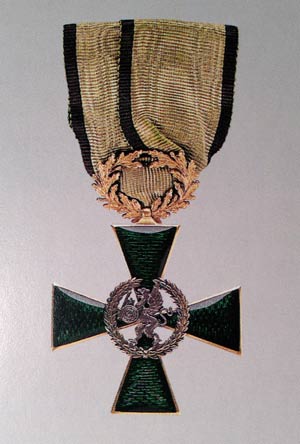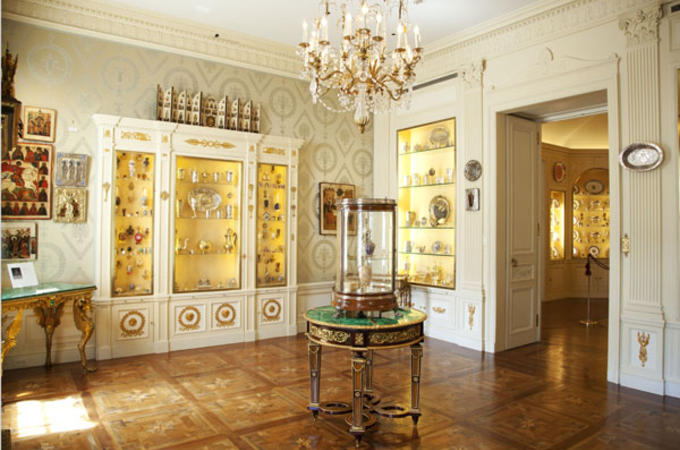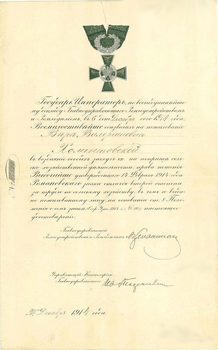|
Before traveling to a foreign country the
serious collector of order decorations and medals always
plans visits to various museums in advanced. Leaving for
America in 1997, it was quite handy that the Orders and
Medals Society of America (OMSA)
had recently published in its circular a very nice
article about the Hillwood museum in Washington, DC,
which was immediately highlighted on the "places to
visit" list.
Appointments
were required those days and while we had to wait for
our turn to visit the grounds and buildings after our
arrival I picked up the brochure "Fabergé at
Hillwood" since it talked about the following:
"Fabergé
was not among the firms that regularly produced orders
of merit, but the Hillwood
collection includes a rare insignia of distinction in
Agriculture (fig 28), its badge enameled in striking
bright green color. Nicholas II presented it in 1915 to
Evgenia Lazareva, who donated her husband's stud farm to
the empire to help improve the breed of horses in
Russia. The horses from this racing stable were later
evacuated to Poland in late 1918 or early 1919, and
Madame Lazareva donated them to the Polish government in
1920."

Hillwood
Estate, Museum & Gardens; Photo by Ed Owen
Fig. 28 (top)
INSIGNIA OF DISTINCTION IN AGRICULTURE 1913;
Gold, enamel, silk H. 2½in. (6.4 cm), W. 1¾ in. (4.5
cm); 18.68 Nicholas II awarded
this honor to Madame Lazareva in 1915, after she donated
her stud horses to the empire to improve the nation's
breeding stock."[1]
This
rare badge was indeed on display among other beautiful
order decorations and artifacts in the Icon Room at the
Hillwood museum:

Hillwood
Estate, Museum & Gardens; Photo by Ed Owen
My collectors
mind being bombarded with an unlimited supply of
St.Andrew, St. Alexander Nevsky, St.George, St.Vladimir,
St. Katherine and St.Anne decorations for non-Christians,
Christians with and without diamonds kept for some odd
reason only that plain designed green cross in mind.
Little did I know that I would stumble across a second
class badge about a decade later:
This particular
piece made completely from silver was also manufactured
in Fabergé's firm. In 2010 I was able to
compare it with the example of the first class at the
Hillwood collection in order to find out that both
pieces originated from the same set of tools. While the
second class badge showed the manufacturer mark (Fabergé),
year and silver marks on the oak leaf suspender and the cross, markings on the golden
first class
were only applied to the reverse of the suspender.
Following
a unfortunately black and white only scan of the first
class decoration as displayed in the Hillwood
collection:
Hillwood
Estate, Museum & Gardens; Photo by Ed Owen
Interestingly
enough both pieces are suspended from a silk ribbon, as described
in Anne Odom's booklet.
Award document
to Wera Valerianonva, who received the second class on
February 27, 1914.

The
award was founded on February 14, 1914, in three
classes. The first class as described above was awarded
15 times, the second class also pictured above 117 times
and the third class, a silver medal, featuring the enameled
cross on its avers 68 times. All grades show the
inscription: "21 February 1913" and "For the works on agriculture"
on the reverse.
Following the silver
medal:
[1] Fabergé at Hillwood; by Anne Odom,
The Hillwood Collections Series, 1996, page 56.
[2] Silver Merit medal as offered at Künker
Auktion 265, September 26, 2015
© A. Schulze Ising, I/13
| 




